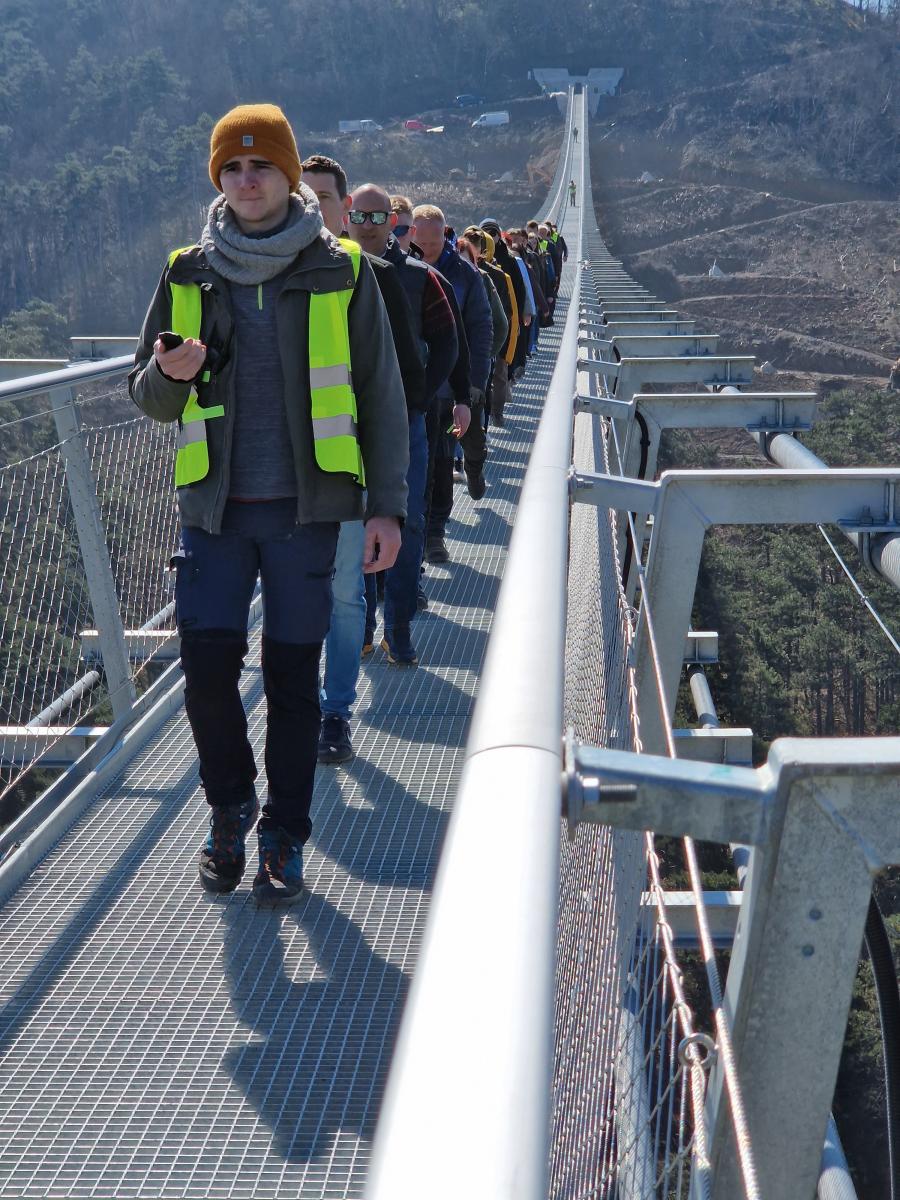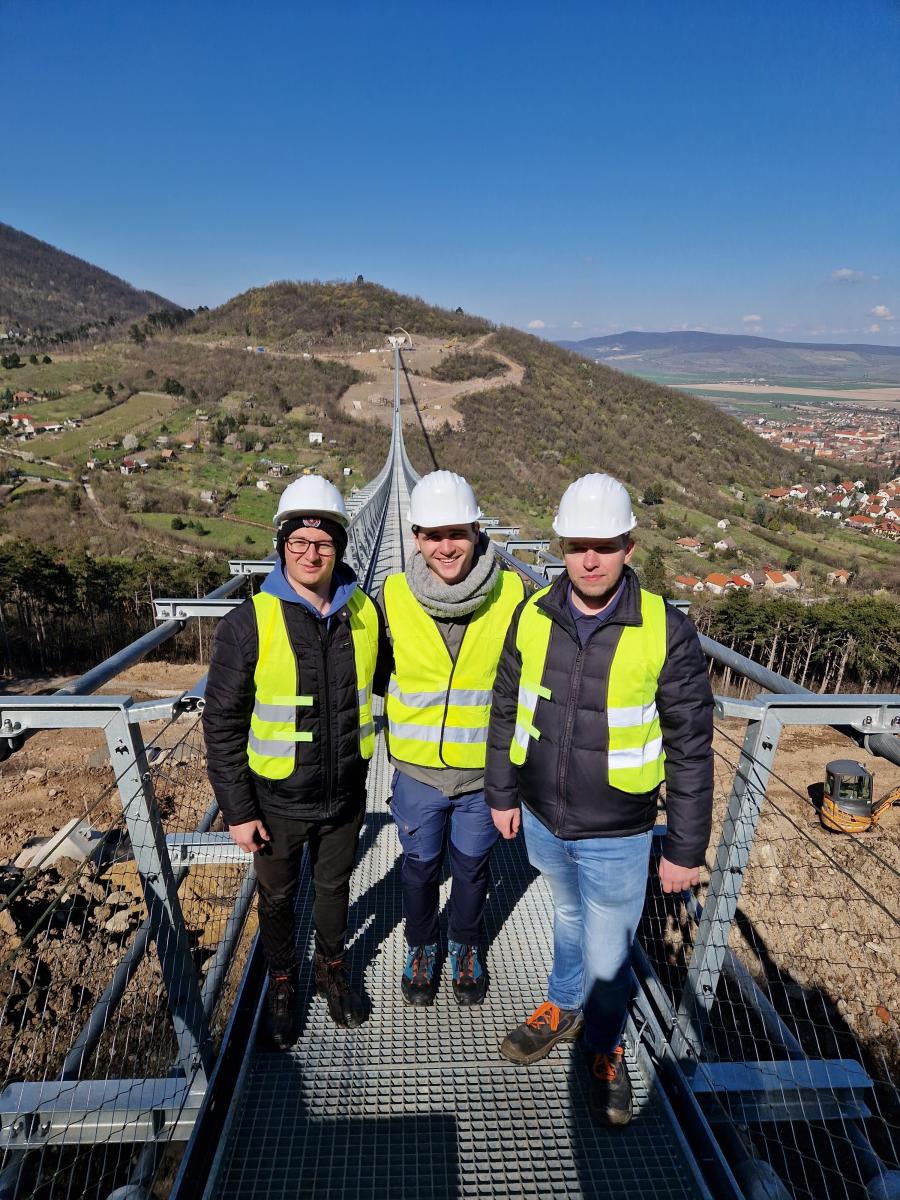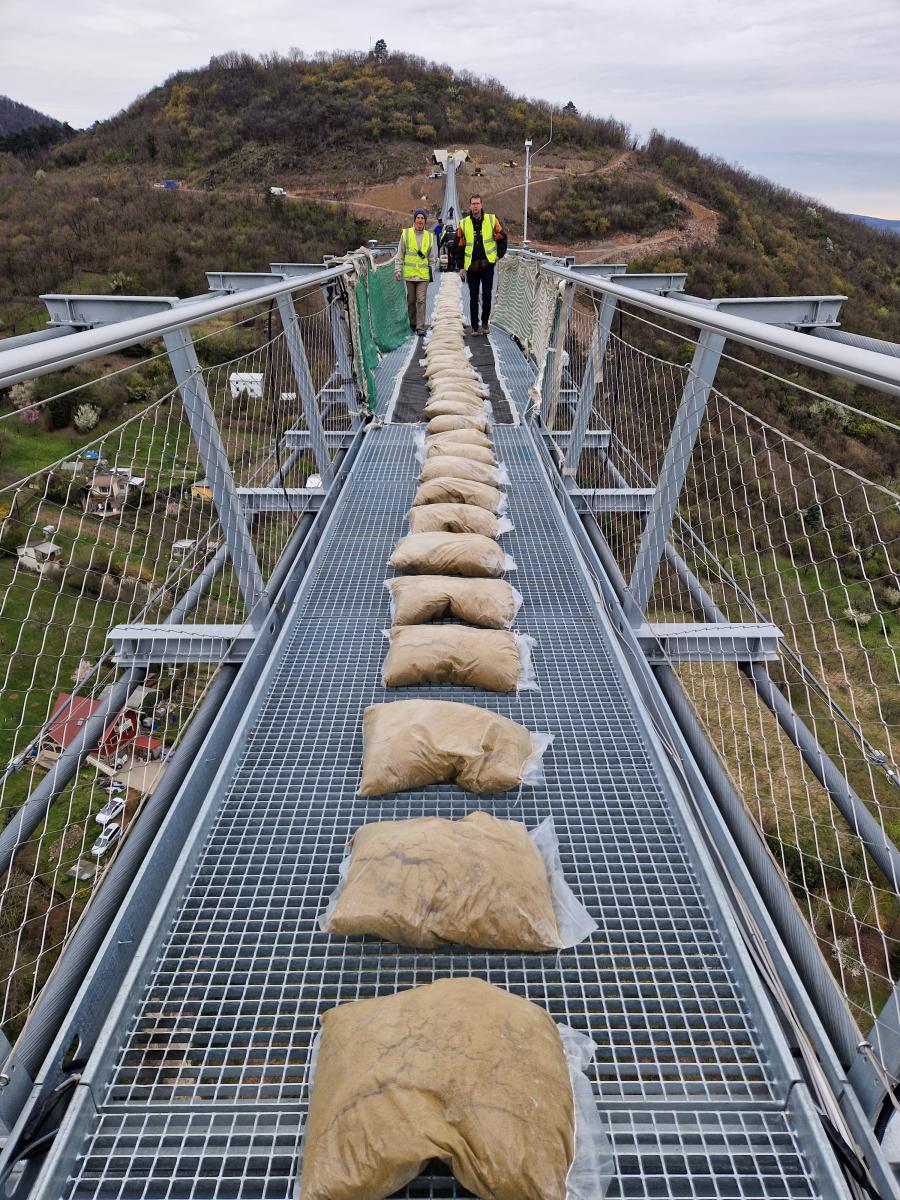The Bridge of National Unity designed in collaboration with the colleagues of the BME’s Faculty of Civil Engineering and Faculty of Mechanical Engineering passed the test successfully.
The construction of the bridge connecting Szár Hill and Vár Hill in Sátoraljaújhely reached a new milestone on 3 April. Under the guidance of László Dunai, professor at the Faculty of Civil Engineering of the BME, the dynamic and static test loads were successfully carried out. The dynamic test load was conducted first with two, then twelve and finally thirty-two people moving on the bridge rhythmically. According to László Dunai, before opening, one of the most important moments in the life of the bridge are static and dynamic test loads. ‘The loading of the bridge went well, the bridge showed the effects that we had expected during the design phase. Our goal was to make the bridge move properly and provide an experience for those who would use it in an adventure park’, said László Dunai.

| The bridge designed as a tourist attraction is more than 700 meters long and is held at a height of 80 meters by six steel cable ropes. Being the longest bridge built with this technology in Hungary, and also in the world, it is a unique, record-breaking bridge. The four billion forint project was launched in 2015 and the bridge is scheduled to be opened in spring 2024. |


After the test loads, László Dunai answered the questions of bme.hu.
How was the static load test completed?
The static test load was carried out by loading the bridge with a total of 640 pieces of 20kg sandbags positioned in various ways. The maximum deflection of the bridge was over 50 cm due to the standard load (interestingly, a 1 degree temperature rise causes a 2 cm deflection).
How did you find volunteers for the dynamic testing?
The dynamic test load team was recruited of members of local sports clubs, secondary school teachers and students. The students of the BME Zielinski Szilárd Civil Engineering College for Advanced Studies, who visited the event, also took part in the testing. After the bridge inspection carried out before the dynamic testing, many of the numerous volunteers stepped back because they found the movement of the bridge unsettling.
Was the length of the bridge a particular challenge in the design?
The length and type of the bridge posed a number of challenges to the designers. Among these should be highlighted the anchoring of the huge tension and the testing of the bridge for wind dynamic and pedestrian dynamic effects. BME researchers also assisted the construction engineers in their work.
Are there any other tasks to be carried out before the opening of the bridge by your the Department and will you have further responsibilities in connection with the bridge’s operation?
In the course of the test load, experts from the BME Department of Structural Engineering and the Department of Geodesy and Surveying built a monitoring system on the bridge, which allows to observe the reactions of the bridge to meteorological influences (temperature, wind) for several months. The characteristics structural conditions continuously provided by the measurement system can be used to determine the practical conditions for the operation of the bridge.

Researchers from the Department of Bridges and Structures, Department of Engineering Geology and Geotechnics, Department of Geodesy and Surveying of BME Faculty of Civil Engineering and the Department of Fluid Mechanics of the BME Faculty of Mechanical Engineering participated in the design and test load of the pedestrian suspension bridge.
| Wind dynamics tests first showed that a pressure difference between the parts under and above the deck can develop when the walkway grating is icy. The resultant upthrust and moment components make the cross-section prone to hovering.
The results of wind tunnel test have shown that, above a certain critical wind speed, aerodynamic instability can indeed occur with a closed (icy) walkway grating. Wind tunnel testing usually considers linear stiffnesses; however, our calculations have shown that, especially in torsional terms, the structure can stiffen significantly after a given angle turn. For this reason, the professionals conducting the tests have developed a numerical calculation method, which is unique worldwide and in our case, was used to adequately model the onset of hovering and the post-critical performance that follows it. For this purpose, a time-dependent analysis was required in which the load rate as well as the location and direction of attack of a given stair could be defined on the basis of the displaced state at the end of the previous stair. The results showed that the stiffening torsional rigidity is indeed of great importance because although it can develop an aerodynamically unstable condition, the displacement amplitudes and and cable amplitudes do not go to infinity but remain within a safe range even at higher wind speeds. Despite these favorable results, visitors will only be allowed to use the bridge at average wind speed of up to 10 m/s and during periods without ice and snow, and after an icing, the operator will have to ensure that it is removed as soon as possible. |

